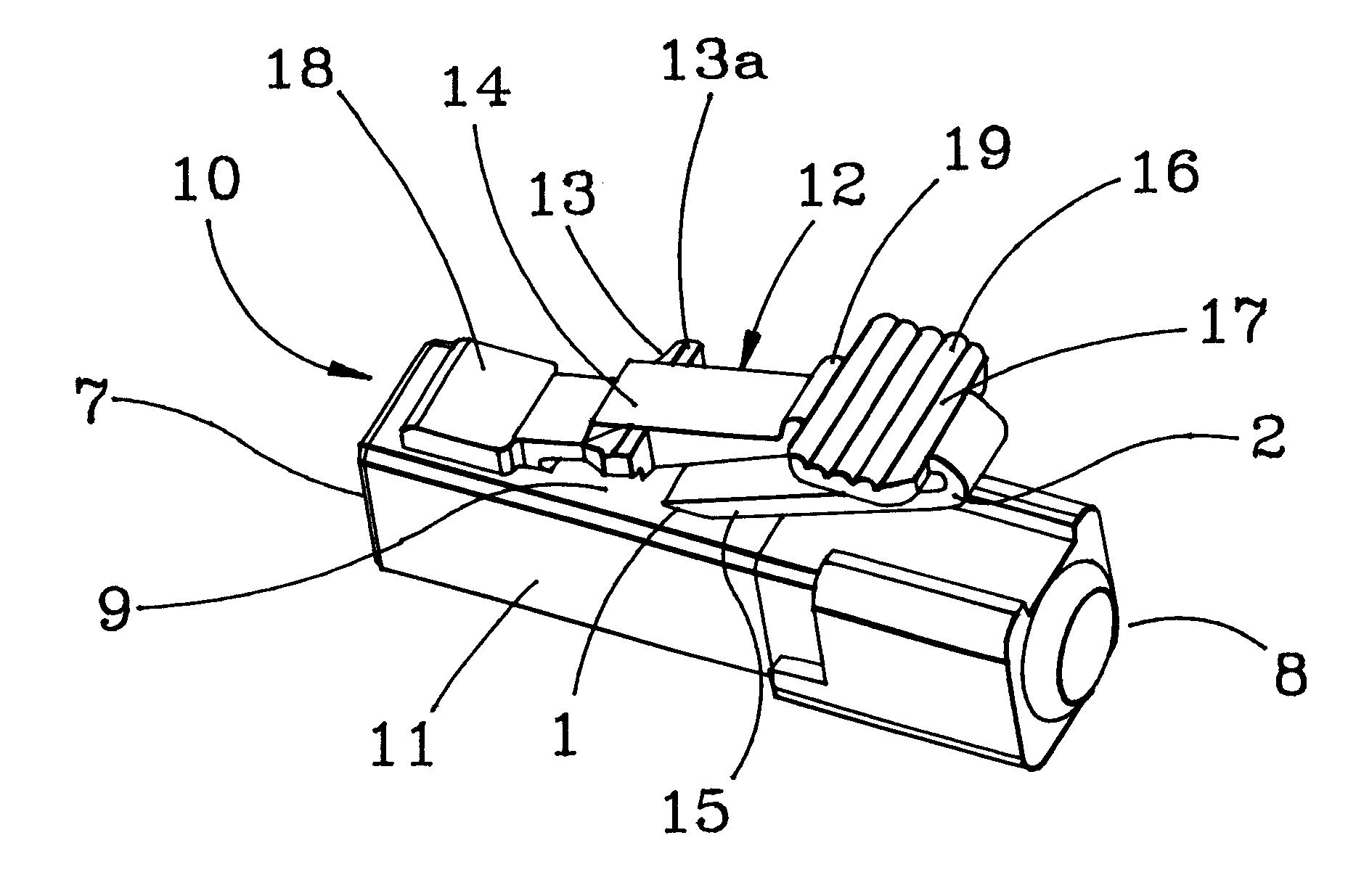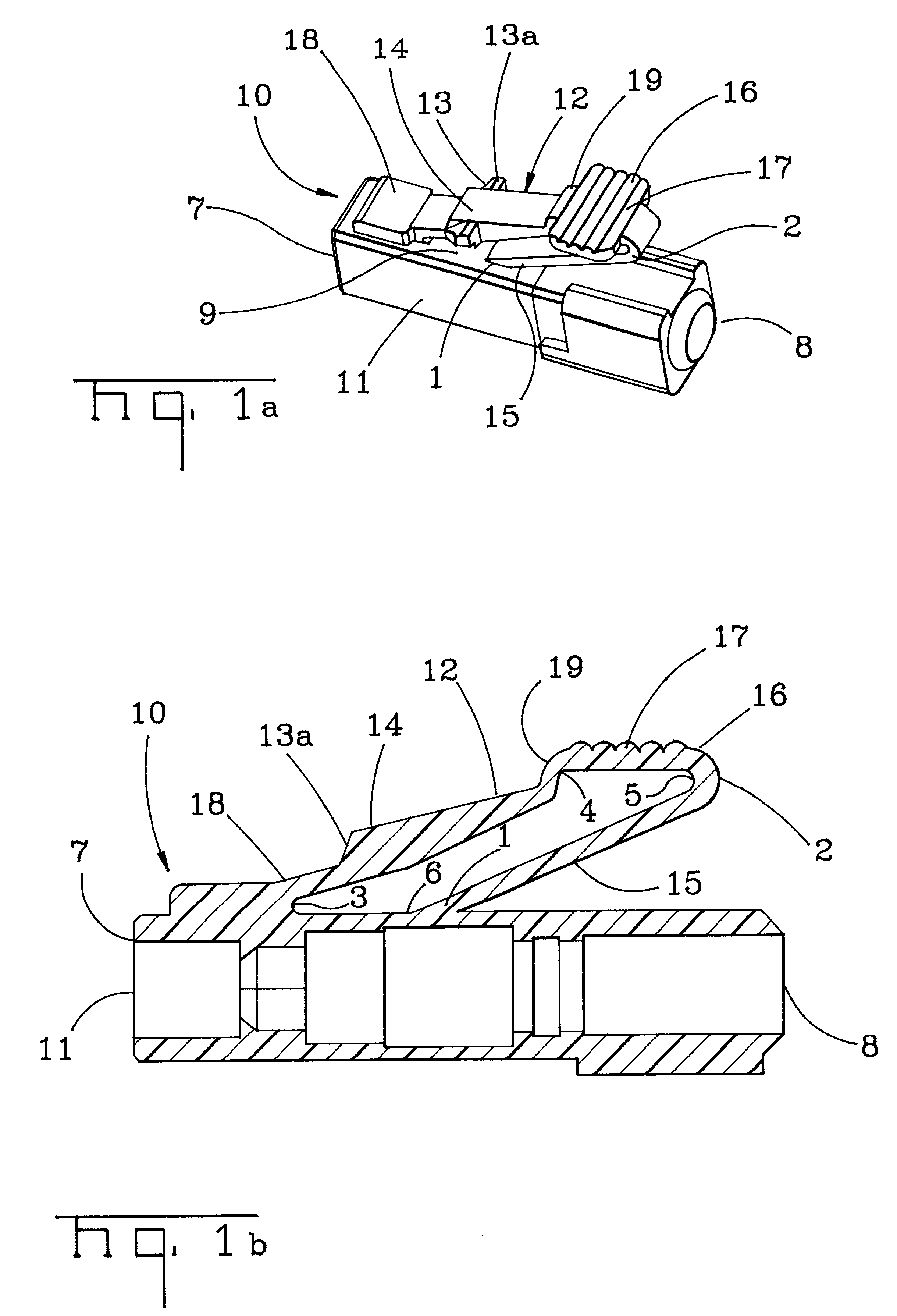Connector with articulated latch
a technology of articulated latches and connectors, applied in the direction of optical elements, coupling device connections, instruments, etc., can solve the problems of difficult backward withdrawal of connectors from receptacles, particularly difficult tasks, and awkward feel of connectors, so as to reduce the axial force of connectors and minimize the net rotation of latches
- Summary
- Abstract
- Description
- Claims
- Application Information
AI Technical Summary
Benefits of technology
Problems solved by technology
Method used
Image
Examples
Embodiment Construction
The latch mechanism of the present invention is suitable for any connector that effects the connection of a signal-carrying medium to a mating connector. As used herein the term "signal-carrying medium" refers to any conventional material used for carrying signals and includes optical waveguides, such as glass optical fibers and plastic optical fibers, and electrical conductors, such as copper and aluminum. The term "mating connector" as used herein refers broadly to any structure configured to receive a connector and to couple the signal-carrying medium contained therein with a device or another signal-carrying medium. Mating connectors include, for example, connector couplings, adaptors, simplex / duplex ports, backplane interfaces, passive devices, such as attenuators and multiplexers / dimultiplexers, and active devices, such as transceivers and simplex transmit / receive devices.
Although the present invention may be practiced with any connector, for illustrative purposes, the descrip...
PUM
 Login to View More
Login to View More Abstract
Description
Claims
Application Information
 Login to View More
Login to View More - R&D
- Intellectual Property
- Life Sciences
- Materials
- Tech Scout
- Unparalleled Data Quality
- Higher Quality Content
- 60% Fewer Hallucinations
Browse by: Latest US Patents, China's latest patents, Technical Efficacy Thesaurus, Application Domain, Technology Topic, Popular Technical Reports.
© 2025 PatSnap. All rights reserved.Legal|Privacy policy|Modern Slavery Act Transparency Statement|Sitemap|About US| Contact US: help@patsnap.com



